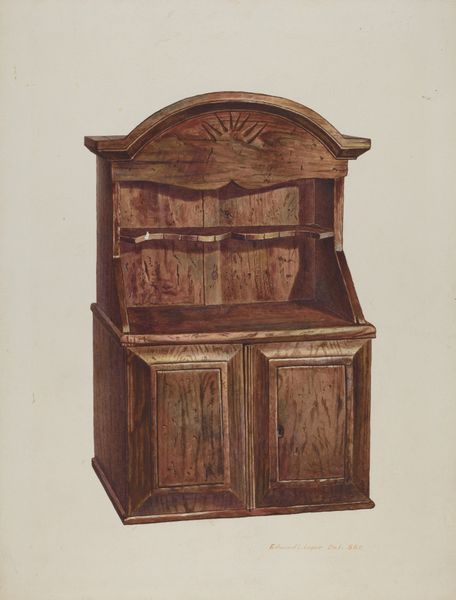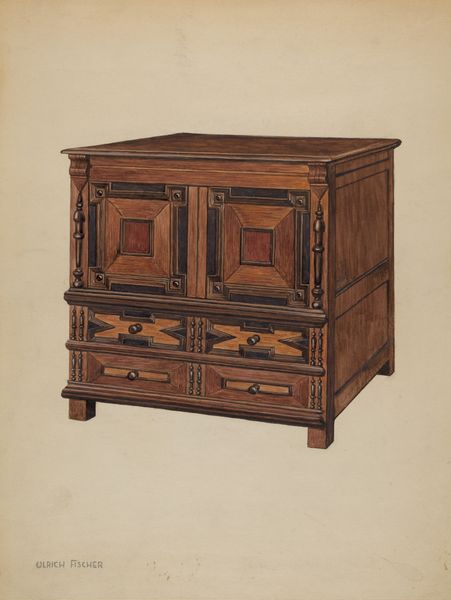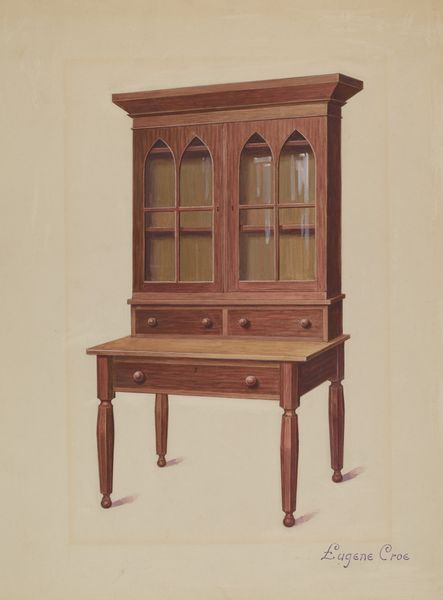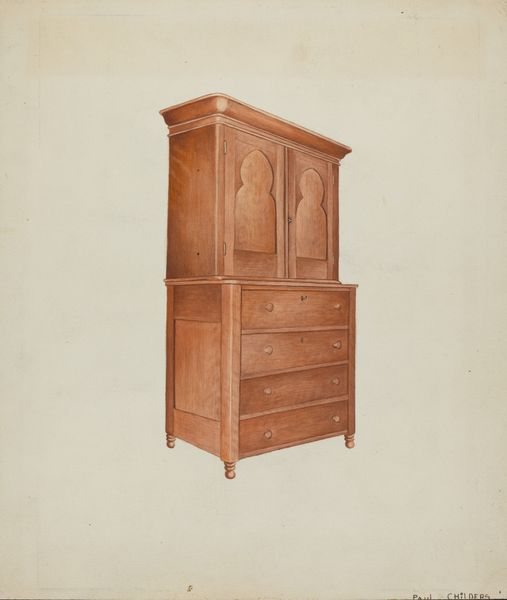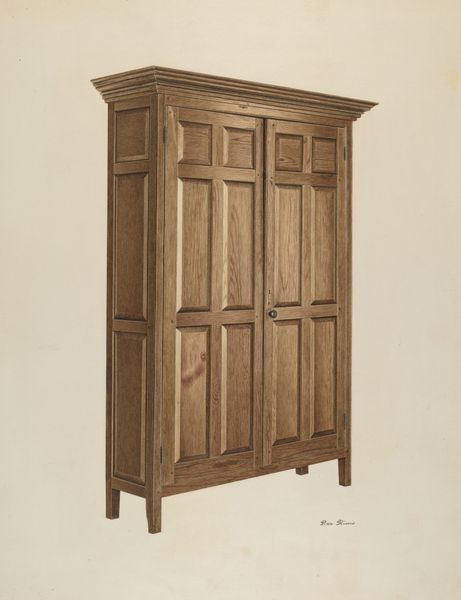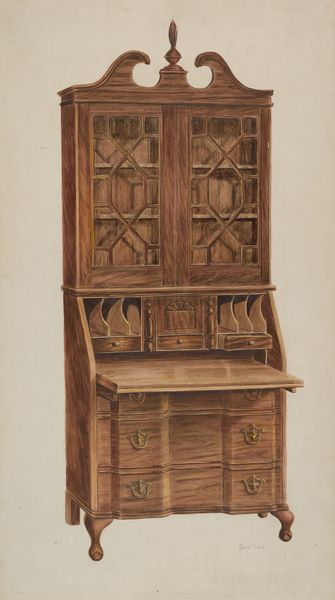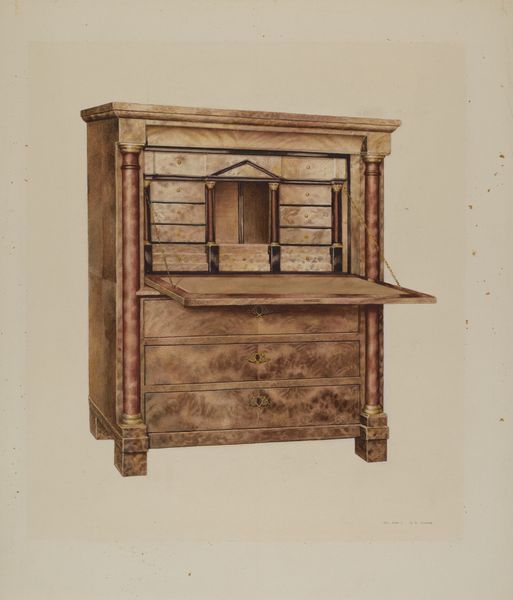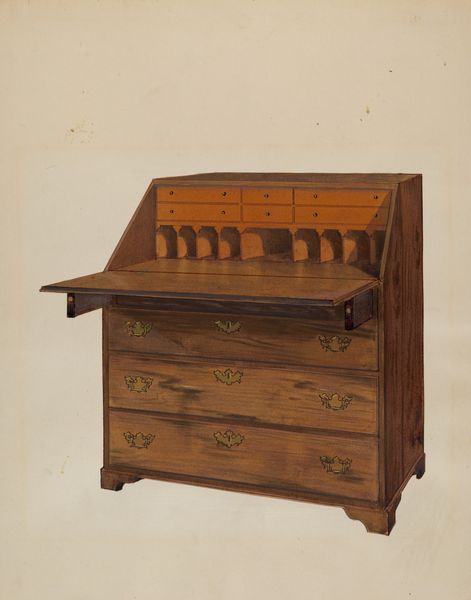
drawing, paper, pencil
#
drawing
#
charcoal drawing
#
paper
#
pencil
#
modernism
#
realism
Dimensions: overall: 55.4 x 40.5 cm (21 13/16 x 15 15/16 in.) Original IAD Object: 6'6"high; 4'2"wide. See data sheet for dets.
Copyright: National Gallery of Art: CC0 1.0
Curator: Oh, my first impression is one of quiet reverence, of age, maybe even ancestral memory held in those shelves. It feels like it should smell faintly of spice. Editor: We're looking at a drawing entitled "Hutch Dresser," created around 1936 by Leslie Macklem, rendered with pencil and charcoal on paper. Curator: Charcoal. That explains the depth of shadow. The textures—I almost feel like I can touch that worn wood. It’s rendered with such care. And what kind of stories this hutch could tell, if only furniture could talk, right? Editor: Well, it could perhaps tell a story about the Depression era in America. Many artists during that period turned to depicting everyday objects, grounding their work in accessible, familiar imagery during times of great upheaval and social change. Curator: Right, a silent, stubborn resistance—insisting on the dignity of everyday life even when the world outside is collapsing. The Modernism, though, it sneaks in—subtle simplification, a kind of streamlined functionality. Editor: Exactly. It's not merely a literal rendering of a piece of furniture, is it? It’s realism tinged with modernism; notice the formal abstraction inherent in isolating the dresser against a blank background. The object becomes iconic, doesn't it? Representing more than just itself. Curator: Definitely. A sort of quiet, sturdy beauty. I can almost smell the beeswax. You know, there's something incredibly touching about someone spending this much time and skill on depicting such an object with dignity. It speaks to respect. Editor: Absolutely, Leslie Macklem transforms the mundane object, a simple hutch dresser, into a monument to survival and domesticity during a turbulent time. A true visual poem of resilience and the every day. Curator: Exactly. And for me, I just want to go home and bake something, put some jams on those shelves, you know? Bring a little more poetry into my own ordinary spaces. Editor: And for me, this drawing deepens my appreciation of the everyday and also reminds me about the importance of art in giving expression and in challenging preconceived meanings about the society we live in.
Comments
No comments
Be the first to comment and join the conversation on the ultimate creative platform.
